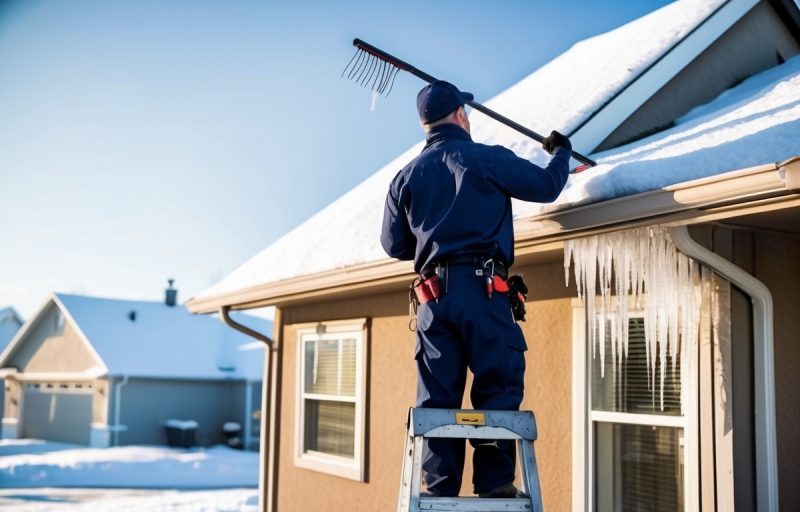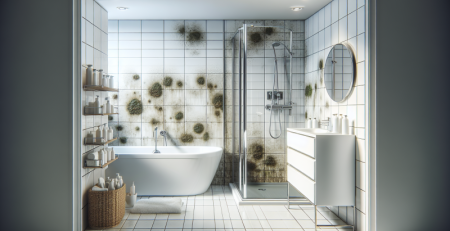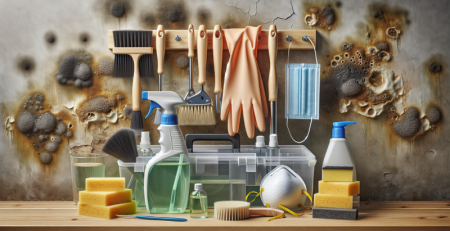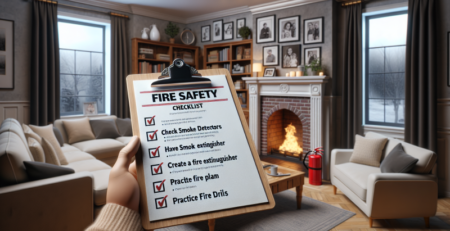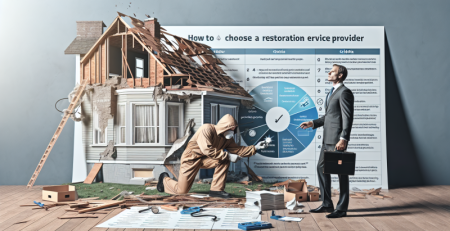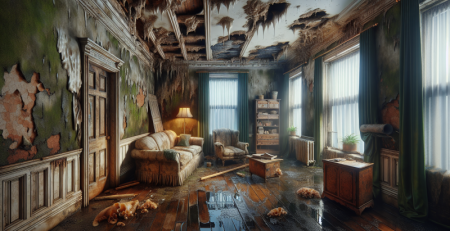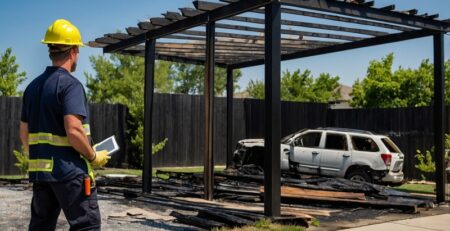How to Safeguard Your Home from Ice Dams
Winter can be a magical time, with snowflakes dancing down from the sky and a cozy warmth filling our homes. However, with the beauty of winter comes the risk of ice dams forming on our roofs. These pesky formations can lead to significant water damage, mold growth, and costly repairs. In this guide, we’ll walk you through effective strategies to safeguard your home from ice dams, ensuring your winter remains worry-free.
Understanding Ice Dams: What Are They and How Do They Form?
Before we dive into prevention strategies, let’s take a moment to understand what ice dams are. An ice dam forms when snow on your roof melts due to heat escaping from your home. This melted snow flows down to the eaves of your roof, where it refreezes because the eaves are colder than the rest of the roof. Over time, this creates a dam of ice that can trap water behind it, leading to leaks and water damage.
Imagine your roof as a highway for melted snow. As it travels down, it encounters a cold zone at the eaves, causing it to stop and pool. This pooling water can seep under shingles and into your home, causing havoc. If you’re in need of water damage restoration in New Jersey, you’ll want to avoid this scenario at all costs!
Ice dams are particularly common in areas with heavy snowfall and fluctuating temperatures. If you live in Central or Northern New Jersey, understanding how to prevent ice dams is crucial. Not only can they lead to water damage, but they can also promote mold growth, necessitating mold cleanup in New Jersey. So, let’s explore how to keep your home safe.
Proper Insulation: The First Line of Defense
The first step in preventing ice dams is ensuring your home is properly insulated. Think of insulation as a warm blanket for your house. It keeps the heat inside where it belongs, preventing it from escaping into the attic and melting the snow on your roof.
Start by checking your attic insulation. Ideally, you should have at least 12-15 inches of insulation to keep your home warm and cozy. If you find that your insulation is lacking, consider adding more. There are various types of insulation available, including fiberglass batts, spray foam, and cellulose. Each has its pros and cons, so do your research or consult with a professional.
In addition to insulation, pay attention to air leaks. Common culprits include gaps around windows, doors, and electrical outlets. Sealing these leaks with caulk or weather stripping can significantly reduce heat loss. Remember, every little bit helps!
For those who prefer a hands-on approach, you can also check for proper ventilation in your attic. Adequate ventilation allows cold air to circulate, keeping the roof temperature consistent and preventing melting. If you notice that your attic is stuffy or warm, it might be time to install vents or exhaust fans.
By investing in proper insulation and sealing air leaks, you’ll create a barrier against heat loss, reducing the likelihood of ice dams forming. If you do experience ice dam issues, don’t hesitate to reach out to Kraus Restoration for professional restoration services.
Roof Maintenance: Keeping Your Roof in Top Shape
Your roof is your home’s first line of defense against the elements, so keeping it in good condition is essential. Regular roof maintenance can help prevent ice dams and the damage they cause. Start by clearing your roof of any debris, such as leaves and branches, which can trap moisture and contribute to ice dam formation.
Next, inspect your roof for any damaged or missing shingles. If you find any, replace them promptly to prevent water from seeping in. It’s also a good idea to check your gutters and downspouts. Make sure they are clear of debris and functioning properly, as clogged gutters can lead to water pooling on your roof.
If you’re not comfortable climbing onto your roof, consider hiring a professional roofing contractor. They can perform a thorough inspection and recommend any necessary repairs. Remember, it’s better to address small issues now than to deal with extensive damage later.
Another effective strategy is to install a roof heating cable. These cables can be placed along the edges of your roof and in gutters to help melt snow and ice, preventing the formation of ice dams. While this may require an upfront investment, it can save you from costly repairs down the line.
In summary, regular roof maintenance is crucial in preventing ice dams. By keeping your roof clear of debris, repairing any damage, and considering additional solutions like heating cables, you can protect your home from winter woes.
Managing Snow Accumulation: A Proactive Approach
Once the snow starts falling, it’s essential to manage its accumulation on your roof. While it may be tempting to let nature take its course, taking proactive steps can save you from potential ice dam issues. The key is to remove snow from your roof before it has a chance to melt and refreeze.
Using a roof rake is an effective way to remove snow. These long-handled tools allow you to pull snow off the edge of your roof without climbing up. Aim to remove snow when it’s still light and fluffy, as this is easier than dealing with heavy, packed snow. Be cautious not to damage your shingles while raking; a gentle touch is key.
If you’re unsure about how much snow to remove, a good rule of thumb is to clear the first few feet of snow from the roof edge. This will help prevent melting snow from pooling and forming ice dams. If you’re dealing with a significant snowfall, consider hiring a professional snow removal service to ensure safety and effectiveness.
Additionally, keep an eye on the weather forecast. If a warm spell is expected after a heavy snowfall, it’s wise to remove snow in advance. This proactive approach can prevent the melting and refreezing cycle that leads to ice dams.
Managing snow accumulation is a straightforward yet effective way to safeguard your home. By regularly clearing snow from your roof, you can reduce the risk of ice dams and the associated water damage restoration needs.
Professional Help: When to Call in the Experts
Sometimes, despite our best efforts, ice dams can still form. If you find yourself facing this issue, it’s crucial to know when to call in the professionals. Attempting to remove ice dams on your own can be dangerous and may lead to further damage.
Professional restoration services, such as those offered by Kraus Restoration, can provide the expertise needed to safely and effectively address ice dams. Their IICRC certified experts are trained in water damage restoration and can help mitigate any damage caused by ice dams.
In addition to ice dam removal, professionals can assess any water damage that may have occurred inside your home. This includes checking for mold growth, which can become a significant issue if water seeps into your walls or ceilings. If you suspect mold, it’s essential to address it promptly with mold cleanup in New Jersey.
Furthermore, if you experience significant water damage, you may need fire damage repair services as well. Water can weaken structural elements, leading to potential fire hazards. A comprehensive assessment by professionals can help identify and address these risks.
In summary, while prevention is key, knowing when to seek professional help is equally important. Don’t hesitate to reach out to experts if you encounter ice dams or water damage. Their rapid response restoration services can save you time, money, and stress.
Conclusion
Ice dams can pose a serious threat to your home during the winter months, but with the right strategies, you can protect your property. By ensuring proper insulation, maintaining your roof, managing snow accumulation, and knowing when to call in the experts, you can significantly reduce the risk of ice dams and the associated damage.
Remember, winter should be a time for enjoyment, not stress. If you do find yourself dealing with water damage, mold, or fire hazards, don’t hesitate to contact Kraus Restoration. Their team of IICRC certified experts is ready to assist you with 24/7 emergency services, ensuring your home remains safe and sound.
What are ice dams and how do they form?
Ice dams are formed when snow on your roof melts due to heat escaping from your home. The melted snow flows down to the colder eaves, where it refreezes, creating a dam that can trap water and lead to leaks.
How can I prevent ice dams?
Preventing ice dams involves ensuring proper insulation, maintaining your roof, managing snow accumulation, and considering professional help if needed. Regular maintenance and proactive measures can significantly reduce the risk.
What should I do if I have an ice dam?
If you have an ice dam, it’s best to call in professionals who can safely remove it and assess any potential water damage. Attempting to remove it yourself can be dangerous and may cause further damage.
Can ice dams lead to mold growth?
Yes, if water from ice dams seeps into your home, it can create a damp environment that promotes mold growth. It’s essential to address any water damage promptly to prevent mold issues.
How can Kraus Restoration help with ice dam issues?
Kraus Restoration offers professional restoration services, including water damage restoration, mold cleanup, and fire damage repair. Their IICRC certified experts are available 24/7 to assist with any property damage restoration needs in New Jersey.
